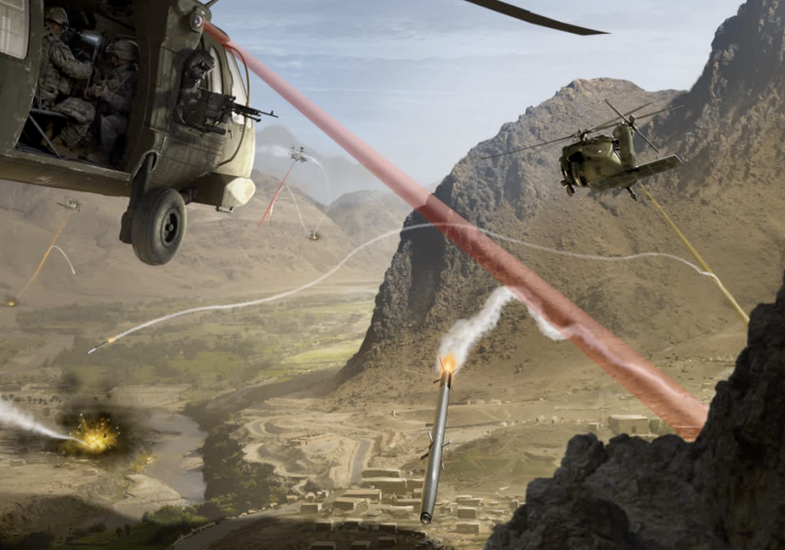With High-Energy Lasers Too Heavy to Fly, Raytheon Plans Lighter Ones That Jam Rather Than Blast
Lasers that can take down an aircraft or zap a boat in roiling seas are certainly the weapons of the...

Lasers that can take down an aircraft or zap a boat in roiling seas are certainly the weapons of the future. But smaller lasers that disrupt rather than destroy could be an even simpler defense system.
Raytheon, which built a laser that cooked a UAV in flight last year, is one of several defense firms working on lasers that take a somewhat more passive approach, such as disabling a missile’s guidance system to prevent it from connecting with its target. Raytheon is developing common infrared countermeasures (CIRCM) systems to be installed on Army and Navy helicopters, and large-aircraft infrared countermeasures systems for the Air Force.
The Quiet Eyes Laser Turret Assembly directs a quantum cascade laser to disable missiles, the company said. It is designed to be installed on any type of airplane, and recently passed a test at Wright-Patterson Air Force Base in a C-130 Hercules.
The company is also using off-the-shelf, lightweight fiber lasers that can go on any helicopter, which would solve the weight problem that has plagued airborne laser systems. Previous directional infrared countermeasures were deemed too heavy for any helicopter except the CH-47 Chinook, but Raytheon’s new generation is designed to fit helicopters down to the size of the Bell AH-1Z Cobra, according to the company. Raytheon unveiled its technology at the Paris Air Show today.
The CIRCM laser would use low-power lasers to jam missile guidance systems — a few dozen watts, rather than tens of thousands of watts, like the laser weapon system demonstrated last year. The CIRCM energy beam can vary in width, output, modulation and frequency, allowing a wide range of possible uses.
This means the laser could be customized to seek out and cripple an enemy system dependent on electronics — whether it’s a guided missile or an aircraft. Raytheon is even working on outfitting missiles with electronics-disabling capabilities, rather than just explosives, according to Aviation Week.
Other defense firms including ITT, Northrop Grumman and Lockheed Martin are also working on CIRCM systems, in response to an Army draft request for proposals.
The Army expects to pick one by late September, and the winning contractor will have 21 months to test and demonstrate its technology. The Navy will adopt the Army’s choice, according to Raytheon.